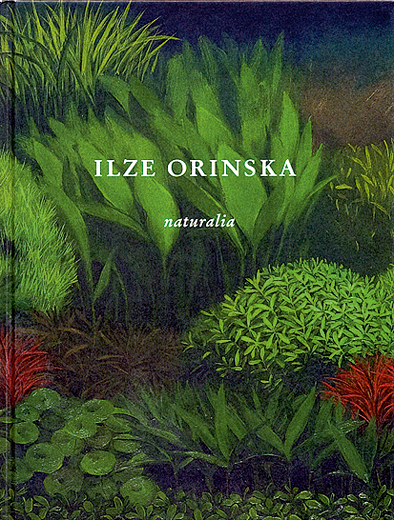|
|
 A Mole Burrow in the City A Mole Burrow in the City Vilnis Vējš, Artist | |
| Leafing through Ilze Orinska's catalogue ‘Naturalia', the very first photograph draws your attention: it features a dark hole in a brownish surface (which turns out to be the entrance to a mole burrow). The next four heighten your interest to slight puzzlement: what the hell is going on here - after two bugs, a dandelion and a violet there follow "official portraits" of birdies. Could this be a nature study textbook for little children? Then, turning the page, there comes a surprise: all over the entire double page spread - sunset skies with dynamic shards of pink and pale clouds. Now this is a nature study for you, mighty and beautiful! It has something of pantheism, the esoteric and the seriousness of classical art. Several times thereafter, the book's layout alternates sky scenes with the picture of a kitten, or a squirrel, or some other member of flora or fauna. | |
 Ilze Orinska. Naturalia: [Katalogs]. Luzern / Poschiavo: Edizioni Periferia, 2009. 56lpp.:il. | |
|
Then, from page 30 onwards, the sequence of images changes drastically. Several spreads are taken up with smallish black and white photographs, in which the author shares the seemingly chaotic flow of her personal fleeting impressions: graveyard crosses interchange alternate with a bullfight in Spain, an apiary with dinosaur skeletons in a museum. The effect of time passing is magnified by the technical execution: old photographic films that had once belonged to the artist's father have been used. These passages are followed by meticulously clinical paintings of several pieces of raw meat, slightly rotten fruit and decaying leaves. The book is concluded with a "wide format" piece, which has also been used for the cover: My Fishtank - an array of aquatic plants arranged into a "cultural" floral arrangement. The polygraphic quality of the book is perfect (Edizioni Periferia publishing house, Switzerland) and the production of the layout is impeccable (designed by Stephan Fiedler). Nothing has been included out of sentimental liking; everything has its conceptual grounds and has been well considered. The selection of works demonstrates that Ilze Orinska is carving out her niche in the art world with rational singlemindedness, and putting to use all her unique weaponry: her exotic, from a Westerner's point of view, Letgalian origin, her studies in the art academies of both Riga and Bremen, and the various skills acquired there complementing each other as a freelance artist in Berlin, where she has lived for many years now. This set of tools guarantees her the access to a reality which has already been closed to other artists from Western metropolises. In it, birds, insects and skies untinted by artificial lighting are the norm, not the exception. Yet the book is enjoyable also because of another feature of Orinska's art: her desire to combine different experiences into a harmonious whole, avoiding dramatic juxtaposition. In such an execution, the often-heard theories about cultures that mutually enrich each other inspire optimism. /Translator into English: Sarmīte Lietuviete/ | |
| go back | |







